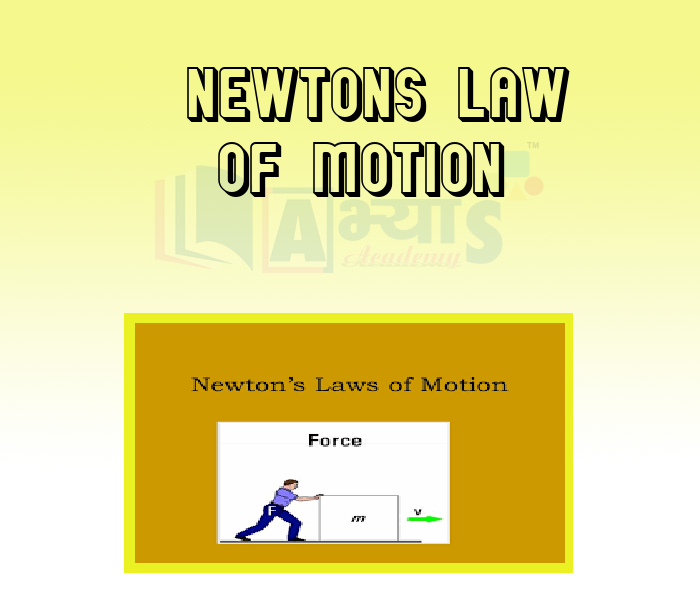Newtons Law of Motion










Newton Law Of Motion
Newton's Law Of Motion:
Newton's First Law of Motion: It states that every body continues in its state of rest or of uniform motion in a straight line, except in so far as it be compelled by some external impressed forces to change that state.
Applications of this law can be felt in every day life. For example, if we are travelling in a car and the brakes are applied suddenly, the car stops immediately. However, we tend to keep moving forward according to the law of inertia. We may be thrown forward rather violently as a consequence.
Newton's Second Law of Motion: Force acting on a body causes change in its position or state of uniform motion; the acceleration produced is the effect. Newton's second law of motion relates these two quantities – force and acceleration. It states that the force on an object is directly proportional to the product of the mass of the object and its acceleration.The second law comes into play when a driver applies the brakes and the large decelerating force created in this way brings the vehicle rapidly to a stop. In a collision, a car is stopped almost instantaneously. The large deceleration that is developed corresponds to large stopping force. It is this force that damages cars in collisions. The faster a car is moving at the instant of impact, the greater the decelerating force and the more damaging the effect upon the car will be.
Newton's Third Law of Motion: It states - To every action there is always an equal and opposite reaction. It should be understood that action and reaction take place in pairs on different bodies. If they acted on the same body, the resultant force would be zero and there could never be accelerated motion.
For example, if we try to push a heavy door the force we exert on it accelerates it as it opens. Simultaneously, we feel the force exerted by the door on us impeding our movement.
Sometimes we can feel the reacting force. If we fire a rifle, the forward thrust of the projectile is matched by the backward thrust, which we call the recoil or "kick" of the rifle. Any one of the two forces may be called action and the other reaction.
Students / Parents Reviews [10]
It was good as the experience because as we had come here we had been improved in a such envirnment created here.Extra is taught which is beneficial for future.

Eshan Arora
8thBeing a parent, I saw my daughter improvement in her studies by seeing a good result in all day to day compititive exam TMO, NSO, IEO etc and as well as studies. I have got a fruitful result from my daughter.

Prisha Gupta
8thA marvelous experience with Abhyas. I am glad to share that my ward has achieved more than enough at the Ambala ABHYAS centre. Years have passed on and more and more he has gained. May the centre flourish and develop day by day by the grace of God.

Archit Segal
7thOne of the best institutes to develope a child interest in studies.Provides SST and English knowledge also unlike other institutes. Teachers are co operative and friendly online tests andPPT develope practical knowledge also.

Aman Kumar Shrivastava
10thAbhyas Methodology is very good. It is based on according to student and each child manages accordingly to its properly. Methodology has improved the abilities of students to shine them in future.

Manish Kumar
10thMy experience with Abhyas is very good. I have learnt many things here like vedic maths and reasoning also. Teachers here first take our doubts and then there are assignments to verify our weak points.

Shivam Rana
7thI have spent a wonderful time in Abhyas academy. It has made my reasoning more apt, English more stronger and Maths an interesting subject for me. It has given me a habbit of self studying

Yatharthi Sharma
10thAbhyas is a complete education Institute. Here extreme care is taken by teacher with the help of regular exam. Extra classes also conducted by the institute, if the student is weak.

Om Umang
10thIt has a great methodology. Students here can get analysis to their test quickly.We can learn easily through PPTs and the testing methods are good. We know that where we have to practice

Barkha Arora
10thMy experience was very good with Abhyas academy. I am studying here from 6th class and I am satisfied by its results in my life. I improved a lot here ahead of school syllabus.
